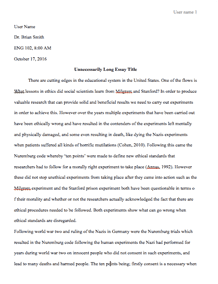

Lack of certain words in other languages can result in communication challenges and translation of the meaning of certain words. It is always essential to use the closest words in the target language. It requires an individual to have the necessary knowledge of the target language and as well as the source language. Non-equivalence at word level refers to the situation whereby the target language tends to have no equivalence for a given word that occurs in the source text. The level and type of difficulty that is encountered are dependent on the nature of the non-equivalence.
The Culture-specific concept may result to non-equivalence in the word level since the Source language word may tend to express a given idea which is not known or different in a given target culture. The socio-linguistic investigation is always essential in the translation process despite one having the required target and source language knowledge that includes the punctuation, pronunciation, and proficiency in grammar spelling. This concept can be concrete or abstract. It could be related to their religious belief, a given type of food or social customs. These concepts are most of the times regarded as culture-specific for example when the word ong manh is used by the people of VNese culture to refer to a young man who has died. It brings in the barrier since only people who are from that particular culture will be in a position of understanding the meaning of that word and hence may end up misinterpreting a given information. The translators are required to have enough knowledge of both cultures and also use the right equivalence that is understandable in the target text. The translators should be aware of the readers in the target text since they are different they could be political or educational in a given society. The culture-specific concept can be reduced or overcome through translation by omission or translation using a word that is more general.
The other reason for the non-equivalence at word level is the source language concept. The source language concept is not lexicalized the target language whereby the source language word may tend to express a concept is known in the target culture but is not given a target language word to express it. For example, the word quantu is used to refer to a man who is straightforward and highly talented in accordance to Confucian. No word is equivalent to E, but it can sometimes be translated as a gentleman but in given circumstances.
Another reason that results to non-equivalence at word level is the source language word is semantically complex. It results in translation problems. For words to be semantically complex is not necessary for them to be morphologically complex. At times a sentence can be easy to understand as compared to a word that is made up of a single morpheme which expresses a meaning that is complex. For example in Vietnamese toi tien anh ta whereby the word tien means saying goodbye to a person after taking him out of the door.
In conclusion, the non-equivalence at word level can occur in any circumstance. The translators should always ensure that they use words that are understood by people who are different cultures and that the source and the target language is not complicated in any form. The translator is required to be knowledgeable about both languages.
References
Armstrong, N. (2005). Translation, Linguistics, Culture: A French-English Handbook. Multilingual Matters.
Request Removal
If you are the original author of this essay and no longer wish to have it published on the customtermpaperwriting.org website, please click below to request its removal:


